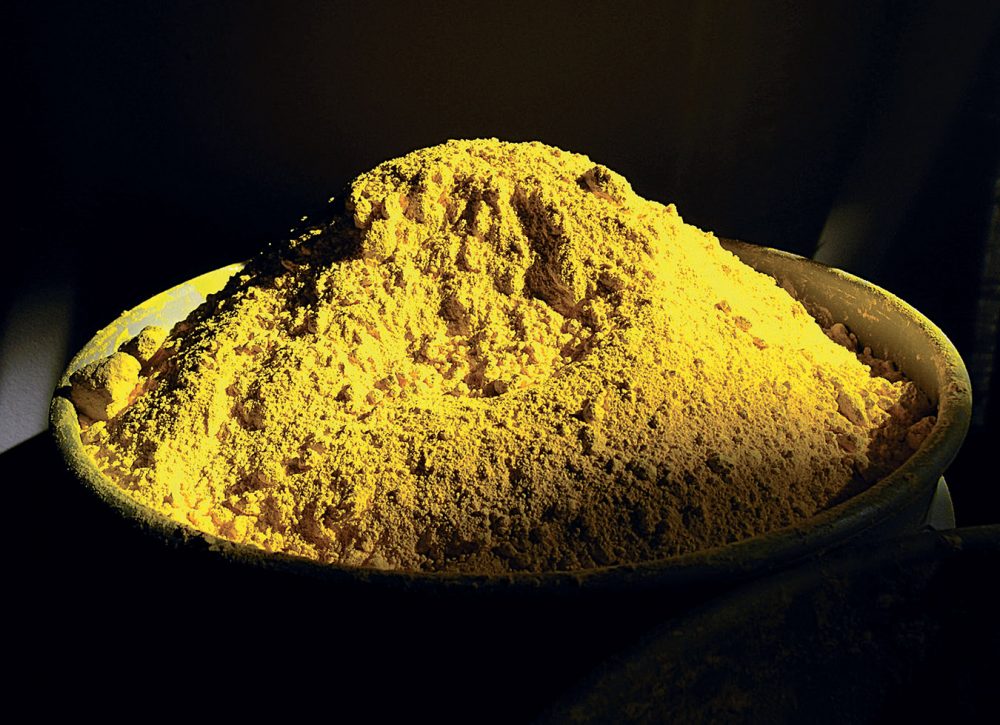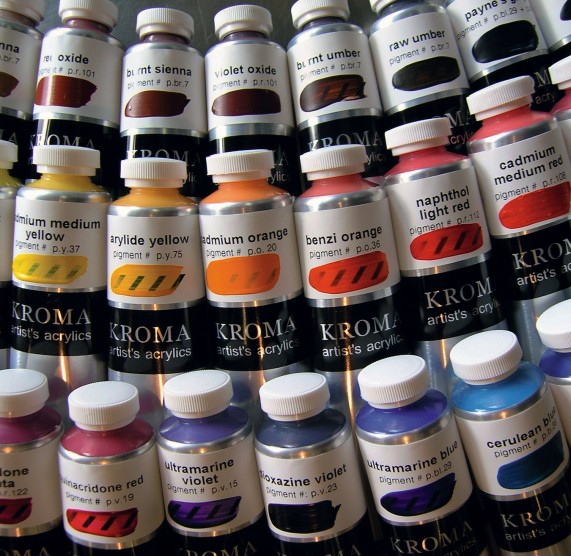What happens when you mix together two parts artist, three parts technician and one part chemist? You get Kevin Head, a savant of pigment particles and paint making, and the man at the helm of Kroma Artist’s Acrylics. Head inherited the Granville Island business from his mentor, Gordon Payne, who created Kroma in 1970 after becoming unsatisfied with the availability of paint for use in his career as an artist. “We discussed a transition [in 1992], but as he packed his truck one day for the studio he had built on Hornby Island, he suddenly turned to me and said, ‘I’m not coming back, so you might as well go ahead with your plans for Kroma,’” Head recalls.
Head’s father was a woodworker and his mother a fabric designer. It seems fitting, then, that his medium is something between the hard and the soft. Acrylic paint is essentially pigment—a substance that selectively absorbs and reflects certain wavelengths of light to appear a particular colour—suspended in a liquid plastic. For Kroma, Head sources pigments from around the world, which are then transformed in small batches into exceptionally smooth flowing paint; Ultramarine Blue is from France, Quinacridone Red from Germany and Arylide Yellow from Brazil. Head has also developed his own version of Payne’s Grey, a blend created in the 18th century that painters find a useful substitute for black.
The pigment, which arrives to Kroma as coloured powder, is carefully measured and combined with water. The mixture is then poured into a chamber where tiny grinding balls smash against clumps of pigment, breaking them down into their primary particle sizes, which can be as small as a quarter micron. Also during the milling process, the pigment particles are simultaneously polished to bring out the colour. The result is a fine paste, which, after being added to a binder—in this case, acrylic resin—is mixed aggressively with a large circular blade that has notched and angled edges.
The paint-making process is actually quite simple—artists commonly made their own paint until about a century ago—but getting the individual formulas right is complex. Fortunately, this happens to be Head’s forte. Each of Kroma’s 50-and-counting colours is individually formulated to ensure, among many other considerations, the maximum loading of pigment into the paint as possible. “There’s no urgency,” Head maintains. “We can play around with something for years. Each pigment has its own personality, so it’s about getting to know them and figuring out how to satisfy their unique surface demands.”
At the microscopic level, each pigment particle has a particular shape, size, translucency, weight and density—factors that will affect the paint’s flow and optical properties. As an example, Head describes a pigment that he sourced from China in 1996 called Raw Titanium, which is basically an unbleached version of Titanium White. He consults a self-made mixing chart to clarify. Colours mixed using Raw Titanium had a depth or feeling to it; comparatively, colours mixed using the regular Titanium White exhibited a flatness or deadness. “There’s something optical happening on the surfaces of the [Raw Titanium] pigment particles, something kicking light around that gives the paint a character that you can’t get in any other way. So now it’s a fascinating pigment, not just a dull white. This opens doors to whole colour areas,” Head explains.
“The most exciting thing about what we do here is that we are a link between people and these raw materials,” he says. Kroma isn’t just a place to purchase handcrafted paints, but a forum for creative discussion. Head has acted as an invaluable consultant on many projects in the community, working with art conservators in colour restoration technology and with individual artists to create custom acrylics. In 2004, Head helped develop a specially calibrated suite of 11 colours for Langara College’s colour theory classes. But even if you’re not a painter, a visit to Kroma may have you seeing colour in a whole new light.









